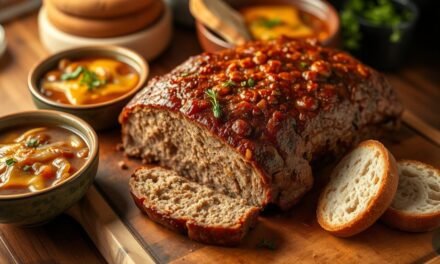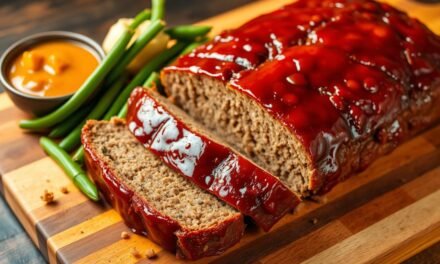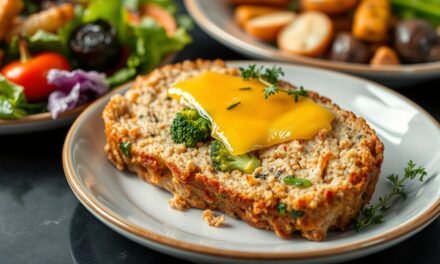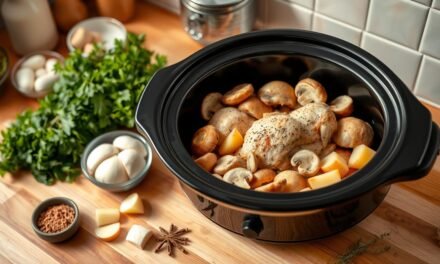Crafting a flavorful and aromatic beer is an art that combines tradition and innovation. One standout ingredient that elevates the brewing process is amber candi syrup D-45. This syrup adds a rich, caramel-like sweetness and depth to the brew, making it a favorite among homebrewers and craft beer enthusiasts alike.
What sets this syrup apart is its ability to enhance both the color and taste of the beer. Unlike regular sugars, it brings a complex flavor profile that balances perfectly with malts and hops. Whether you’re a beginner or an experienced brewer, this ingredient offers versatility and consistency in every batch.
In this guide, you’ll discover a detailed step-by-step process to create a delicious amber ale recipe with amber candi syrup D-45. From selecting the right equipment to balancing flavors, we’ll cover everything you need to know. Get ready to explore a unique blend of traditional brewing methods and modern techniques.
Key Notes
- Amber candi syrup D-45 adds a rich, caramel flavor to your brew.
- It enhances both the color and depth of the beer.
- This syrup is versatile and suitable for brewers of all levels.
- Learn detailed instructions for crafting a balanced and flavorful beer.
- Discover tips for pairing your brew with complementary dishes.
Table of Contents
Introduction to Amber Ale and D-45
The journey to crafting a unique beer begins with the right ingredients. One style that stands out for its balance and depth is the amber ale. Known for its harmonious blend of maltiness and hop bitterness, this beer offers a rich and satisfying experience. Whether you’re a seasoned brewer or just starting, understanding the style is key to mastering it.
Understanding the Amber Ale Style
Amber ale is celebrated for its versatility and approachable flavor profile. It strikes a perfect balance between the sweetness of malt and the bitterness of hops. Traditional versions lean toward a caramel-like richness, while modern interpretations often incorporate additional complexity. This makes it a favorite among brewers looking to experiment with flavors.
Key characteristics of amber ale include:
- A medium body with a smooth, drinkable texture.
- Aroma notes of toasted bread, caramel, and subtle fruitiness.
- A balanced finish that isn’t overly sweet or bitter.
The Role of D-45 in Enhancing Flavor and Color
One ingredient that elevates amber ale is D-45 syrup. This invert sugar adds a deep caramel note and enhances the beer’s color, giving it a warm, inviting hue. Unlike regular sugar, it contributes to a more complex flavor profile, making it a valuable addition to the brewing process.
Here’s how D-45 syrup makes a difference:
- It deepens the beer’s color, creating a visually appealing amber tone.
- The caramel flavor complements the malt, adding richness without overpowering.
- It improves fermentation efficiency, ensuring a consistent and high-quality brew.
By focusing on quality ingredients like D-45 syrup and selecting the right yeast, you can create a beer that’s both flavorful and visually stunning. In the next sections, we’ll dive deeper into the techniques and tools needed to perfect your brew.
amber ale recipe with amber candi syrup d-45: Ingredients and Equipment
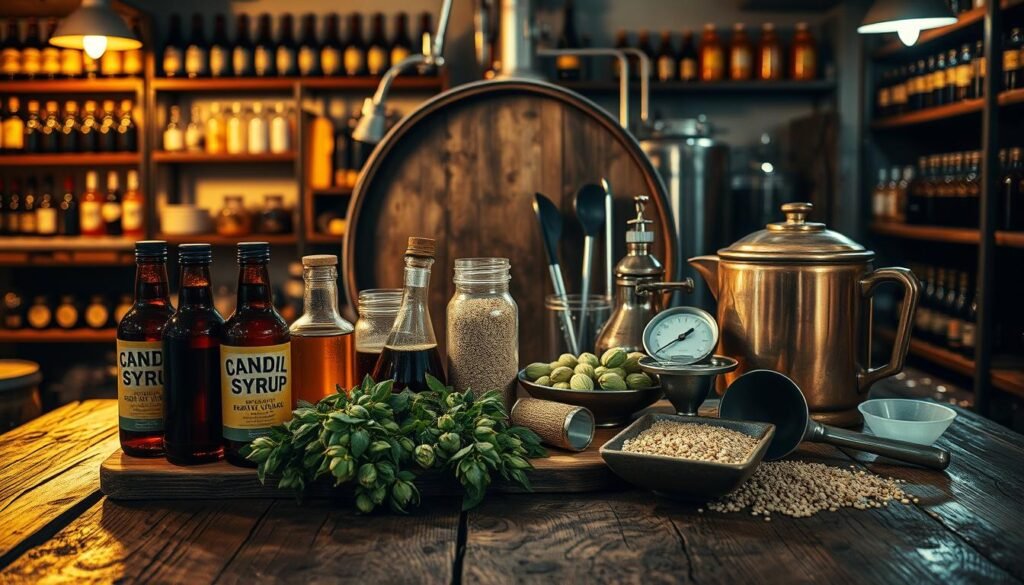
The foundation of a great brew lies in selecting the right ingredients and tools. Every component plays a crucial role in shaping the flavor, aroma, and texture of the final product. From the grains to the yeast, each choice impacts the style and quality of your beer.
Essential Malts, Hops, and Yeast for the Recipe
To craft a balanced and flavorful beer, start with high-quality grains. Belgian pilsner malt forms the base, providing a clean and crisp foundation. Specialty malts, like caramel and roasted varieties, add depth and complexity. Here’s a breakdown of the key ingredients:
| Ingredient | Quantity | Purpose |
|---|---|---|
| Belgian Pilsner Malt | 10 lbs | Base grain for fermentable sugars |
| Flaked Oats | 1 lb | Adds body and smoothness |
| Specialty Malt | ⅕ lb | Enhances color and flavor |
| High Alpha Hops | 3.7 g/gallon | Provides bitterness |
| Low Alpha Hops | 4.4 g/gallon | Adds aroma and subtle flavor |
| Ale Yeast | 1 packet | Drives fermentation |
Hops are another critical element. High alpha varieties like Perle contribute bitterness, while low alpha hops such as Chamomile add floral notes. Yeast selection is equally important. Ale yeast is ideal for this style, as it thrives at moderate temperature ranges and enhances the beer’s fruity and spicy undertones.
Must-Have Brewing Equipment
Reliable tools are essential for a smooth brewing process. Here’s a list of equipment every brewer should have:
- Brew Kettle: For boiling the wort and infusing flavors.
- Fermenter: A vessel where fermentation takes place.
- Hydrometer: Measures the specific gravity to track progress.
- Thermometer: Ensures precise temperature control.
- Siphon: Transfers the beer without disturbing sediment.
Investing in quality equipment ensures consistency and efficiency. As the saying goes, “Good tools are the first step to great results.” With the right ingredients and gear, you’re well on your way to crafting a beer that’s both flavorful and memorable.
Step-by-Step Brewing Process
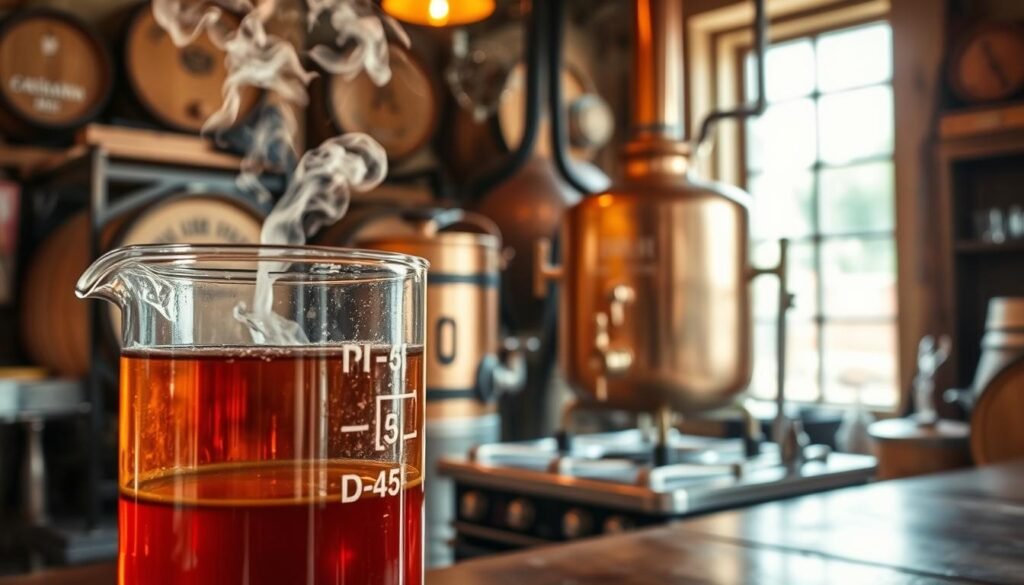
Mastering the brewing process requires attention to detail and precision at every stage. From preparing the wort to initiating fermentation, each step plays a crucial role in shaping the final product. Here’s a clear guide to help you navigate the process with confidence.
Preparing the Wort with Amber Candi Syrup D-45
Start by heating water in your brew kettle to the appropriate temperature. Once the water reaches the desired level, add your grains and allow them to steep. This step extracts the essential sugars and flavors that form the base of your beer.
Next, carefully mix the syrup into the wort. Ensure it dissolves completely to achieve a consistent flavor profile. The syrup adds a rich caramel note, enhancing both the taste and color of the brew.
Monitor the boil time closely, adding hops at specific intervals. This ensures a balanced bitterness and aroma. For example, high alpha hops can be added early in the boil, while low alpha varieties are best introduced later.
After boiling, cool the wort rapidly to the ideal pitching temperature. This step is critical to prevent off-flavors and prepare the wort for fermentation.
Pitching Yeast and Initiating Fermentation
Once the wort is cooled, transfer it to a sanitized fermenter. Pitch your yeast evenly to ensure a strong start to fermentation. The yeast plays a vital role in developing the beer’s character and flavor profile.
Maintain a consistent fermentation temperature between 65-75°F. This range promotes healthy yeast activity and prevents unwanted flavors. Use a thermometer to monitor the temperature regularly.
During fermentation, the yeast converts sugars into alcohol and carbon dioxide. This process typically takes 10-14 days, but the exact time can vary based on the yeast strain and conditions.
For optimal results, avoid disturbing the fermenter during this phase. Once fermentation is complete, you can make adjustments to refine the beer’s final character and flavor profile.
Balancing Flavor and Achieving the Perfect Caramel Twist

Achieving the perfect balance of flavors in beer is both a science and an art. It requires careful attention to ingredients, techniques, and adjustments throughout the brewing process. The interplay of sweetness and bitterness is crucial, especially when working with ingredients that add depth and complexity to the brew.
Tips for Perfecting Sweet and Bitter Balance
Balancing sweetness and bitterness starts with understanding your ingredients. The addition of D-45 syrup introduces a rich caramel note, which can be fine-tuned to complement the beer’s overall profile. Here are some practical tips:
- Adjust water levels: The mineral content in your water can influence the beer’s taste. Use a balanced water profile to enhance both sweetness and bitterness.
- Control sugar levels: Too much sugar can overwhelm the beer, while too little may leave it flat. Measure carefully to achieve the desired sweetness.
- Experiment with hop additions: High alpha hops add bitterness, while low alpha varieties contribute aroma. Adjust the timing and quantity to balance the flavors.
How D-45 Enhances Caramel Notes and Color
D-45 syrup plays a key role in enhancing both the flavor and appearance of your beer. Its unique composition creates a rich caramel note that blends seamlessly with the malt. Here’s how it works:
| Aspect | Impact |
|---|---|
| Flavor | Adds a deep, caramel-like sweetness without overpowering. |
| Color | Creates a warm, inviting amber hue. |
| Fermentation | Improves efficiency, ensuring a consistent brew. |
By carefully adjusting the level of D-45 syrup and pairing it with the right hops and malts, you can create a beer that’s both flavorful and visually appealing. Experimentation is key, but always keep consistency in mind to achieve the best results.
Managing Fermentation and Temperature Control
Fermentation is the heart of brewing, where flavors and aromas come to life. Proper management ensures consistency and quality in every batch. Temperature control plays a critical role in shaping the beer’s profile, from its flavor to its color. By monitoring and adjusting conditions, you can achieve predictable and desirable results.
Monitoring Fermentation Temperatures Effectively
Maintaining the right temperature is essential for healthy yeast activity. For most styles, the ideal range is between 65-75°F. Use a thermometer to check regularly and ensure consistency. Fluctuations can lead to off-flavors or stalled fermentation.
Here are key steps for effective monitoring:
- Place the fermenter in a stable environment, away from direct sunlight or drafts.
- Check the temperature at least twice daily, especially during peak fermentation.
- Use a temperature-controlled fermentation chamber for precision.
Adjusting Yeast Activity for Optimal Results
Yeast plays a vital role in breaking down sugars and developing the beer’s characteristic flavors. To optimize its performance, ensure proper aeration before pitching and maintain a consistent environment. If fermentation slows, gently rouse the yeast by swirling the fermenter.
Here’s how to troubleshoot common issues:
- If the temperature is too low, move the fermenter to a warmer spot or use a heating pad.
- If the temperature is too high, cool the fermenter with a water bath or fan.
- For stuck fermentation, consider adding a yeast nutrient or repitching fresh yeast.
By carefully managing these factors, you can ensure a smooth fermentation process and achieve the desired color and flavor profile in your brew.
Common Brewing Mistakes and How to Avoid Them
Brewing is a rewarding craft, but even small mistakes can lead to big problems. Whether you’re a novice or an experienced brewer, understanding common pitfalls is key to producing high-quality beer. From off-flavors to sanitation lapses, this section will guide you through troubleshooting and refining your process.
Troubleshooting Off-Flavors and Other Issues
Off-flavors can ruin an otherwise great brew. These issues often stem from process errors, such as improper fermentation temperatures or incorrect ingredient measurements. Here’s how to identify and fix them:
- Detect off-flavors: Common issues include sourness, excessive bitterness, or a metallic taste. These can result from contamination, poor sanitation, or incorrect hop additions.
- Adjust fermentation: Maintain a consistent temperature between 65-75°F. Use a thermometer to monitor and avoid fluctuations that can stress yeast.
- Balance ingredients: Measure the amount of hops and malts carefully. Even a small difference can significantly impact the final flavor.
Maintaining Sanitation and Ingredient Quality
Sanitation is critical in brewing. Contamination can introduce unwanted bacteria or wild yeast, leading to off-flavors and spoiled batches. Follow these best practices to ensure quality:
- Clean equipment thoroughly: Use a no-rinse sanitizer for all tools and fermenters. Pay special attention to hard-to-reach areas.
- Select fresh ingredients: Check the expiration dates on yeast and malts. Store ingredients in a cool, dry place to maintain their quality.
- Monitor water quality: The variety of minerals in your water can affect the beer’s taste. Use filtered or treated water for consistent results.
By addressing these common mistakes, you can enhance your brewing experience and produce beer that’s both flavorful and consistent. Remember, attention to detail makes all the difference.
Experimenting with Additional Flavoring Options
Exploring new flavors can transform your brew into a unique masterpiece. While the primary ingredient plays a central role, adding creative elements like spices, herbs, and alternative syrups can elevate your beer’s character. This section dives into innovative ways to enhance your brew while maintaining balance and harmony.
Incorporating Spices and Herbs for Unique Profiles
Spices and herbs offer endless possibilities for adding depth and complexity to your beer. Ingredients like cinnamon, nutmeg, and chamomile can introduce subtle yet distinct flavors. For example, cinnamon adds warmth, while chamomile brings a floral note. These additions can complement the primary ingredient without overpowering it.
Here are some ideas to get started:
- Cinnamon: Adds a warm, spicy undertone, perfect for seasonal brews.
- Nutmeg: Introduces a hint of sweetness and complexity.
- Chamomile: Provides a delicate floral aroma, ideal for lighter styles.
Exploring Back-Sweetening Techniques with Syrups
Back-sweetening is a technique used to add sweetness after fermentation. This method allows you to control the beer’s final flavor profile without affecting yeast activity. Syrups like maple and sorghum can be excellent choices for this purpose. They introduce unique flavors while enhancing the beer’s texture.
Here’s a comparison of popular syrups:
| Syrup | Flavor Profile | Best Use |
|---|---|---|
| Maple Syrup | Rich, earthy sweetness | Stouts, Porters |
| Sorghum Syrup | Mild, nutty sweetness | Lagers, Pale Ales |
| Alternative Syrups | Varies by type | Experimental Brews |
When using these syrups, it’s essential to share the details of your process with fellow brewers. This not only helps refine your technique but also encourages others to experiment. For example, adding syrup during the boil or directly to the kettle can yield different results. Over time, you’ll discover the perfect balance for your brew.
Remember, the goal is to enhance the beer’s flavor without overshadowing the primary ingredient. With careful experimentation, you can create a brew that’s both unique and memorable. Take your time, perhaps over a week, to test different combinations and find what works best for your style.
Bottling, Conditioning, and Serving Your Amber Ale
The final stage of brewing is where your hard work transforms into a drinkable masterpiece. Proper bottling, conditioning, and serving techniques ensure your beer’s flavor, carbonation, and presentation are at their best. This guide will walk you through the essential steps to perfect this process.
Best Practices for Bottling and Carbonation
Start by sanitizing your bottles and equipment thoroughly. Any contamination can spoil your beer, so use a no-rinse sanitizer for efficiency. Once sanitized, prepare your priming solution by dissolving sugar in boiling water. This solution will provide the carbonation your beer needs.
Transfer your beer to a bottling bucket, ensuring minimal exposure to air. Add the priming solution and mix gently to distribute it evenly. Fill each bottle, leaving about an inch of headspace to allow for carbonation. Seal the bottles with caps and store them in a cool, dark place.
Use a hydrometer to monitor the carbonation process. Conditioning typically takes 2-3 weeks, but some styles may require longer. For a crisp finish, aim for a carbonation level of at least 3.2 volumes of CO2, as recommended for Belgian-style beers.
Selecting the Right Glassware and Food Pairings
The right glassware enhances your beer’s aroma and flavor. Tulip glasses are ideal for capturing the complex notes of your brew, while pint glasses work well for a more casual experience. The shape of the glass can significantly impact your drinking experience.
When it comes to food pairings, consider the beer’s profile. Grilled meats, roasted vegetables, and rich desserts complement the caramel and malt flavors. For example, a dish with smoky or savory elements can balance the beer’s sweetness.
- Grilled Meats: Enhance the beer’s richness with a smoky barbecue.
- Roasted Vegetables: Highlight the caramel notes with a side of roasted root vegetables.
- Rich Desserts: Pair with chocolate cake or crème brûlée for a decadent finish.
By following these steps, you’ll ensure your beer is not only delicious but also beautifully presented. Whether you’re sharing with friends or enjoying it yourself, the final touches make all the difference.
Conclusion
Perfecting your brew requires a blend of precision, creativity, and quality ingredients. Throughout this guide, we’ve explored how the highlighted ingredient enhances both flavor and color, offering a unique twist to your beer. By carefully balancing ingredients and managing fermentation, you can achieve a brew that stands out.
The step-by-step process ensures consistency, while advanced tips help troubleshoot common issues. Experimentation is key to refining your technique and discovering new flavor profiles. Whether you’re a beginner or an experienced brewer, the journey to crafting exceptional beer is both rewarding and fulfilling.
We encourage you to try these methods, share your results, and continue refining your craft. With dedication and the right tools, you can create a brew that’s not only delicious but also a true reflection of your skills. Cheers to your next brewing adventure!


